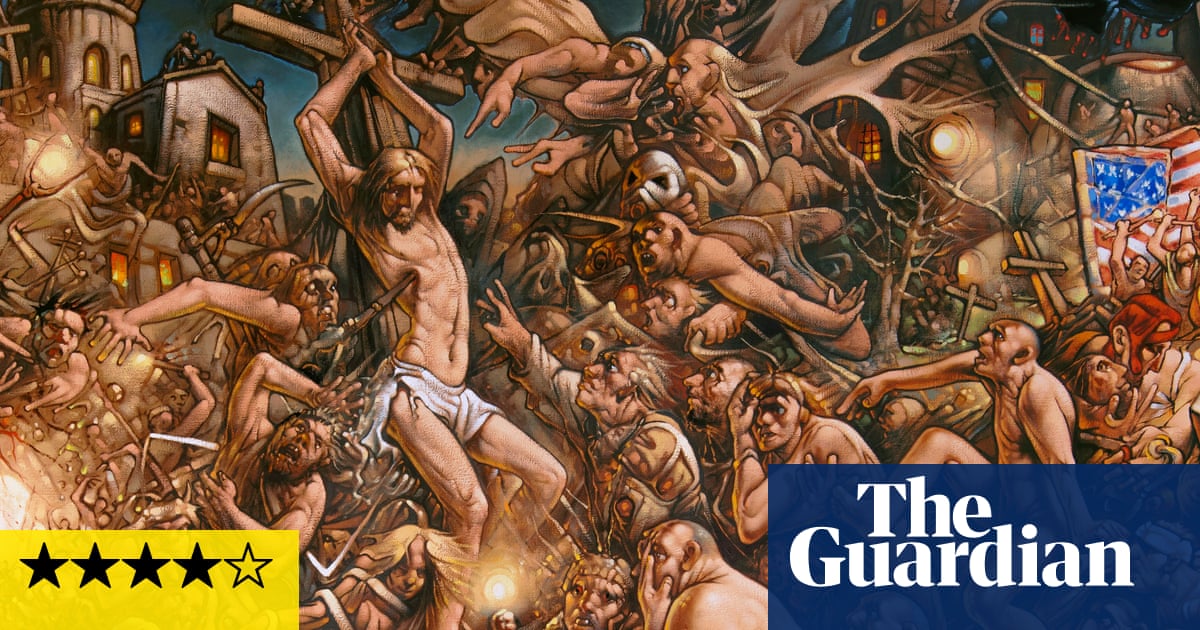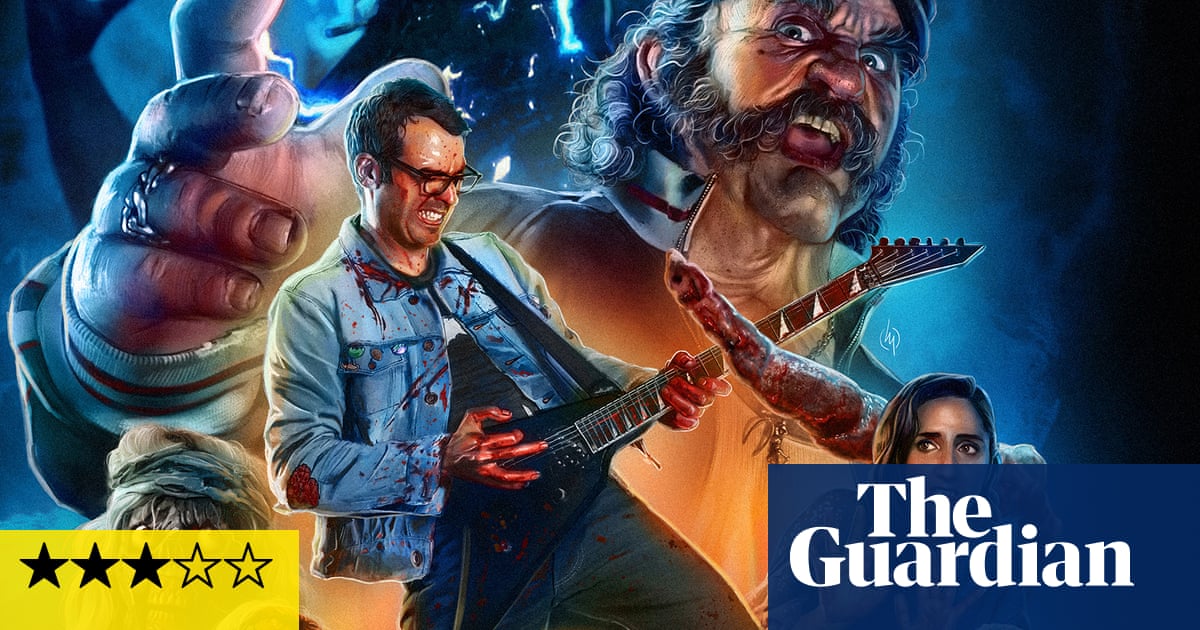
You’ve binged on standup, seen enough Belgian drama and it feels half an hour too early to go to the pub. A quiet moment in an art gallery may be called for.
Art at Edinburgh has a festival of its own in August, yet who comes for that? In a city gripped by live performance, exhibitions are bit-part players. Yet this year there are shows that can hold their own with the most charismatic performers, and even give theatre makers an idea or two.
Alberta Whittle engages her audience with calm confidence in her impressive show at the Scottish National Gallery of Modern Art. She’s an entrancing – and harrowing – raconteur. An installation of a sunken house remembers the Barbadian musician Neville Denis Blackman, known as the “Great Carew”, who drowned when his home, no more than a hut, was swept out to sea in a storm in 1995. Race and poverty, it suggests, determine who is hit first by climate change.
Yet Whittle follows every punch with a moment of calm. There’s a gallery set aside for emotional recovery, as well as watercolours urging mindfulness: “And rest,” she advises. This emphasis on spiritual massage could get annoying but doesn’t. On video, Whittle takes us to a cemetery where slaves were dumped anonymously while white people were buried with gravestones telling future generations who they were. She films gentle rituals to overcome such a legacy, insisting on her right to individuality, even showing a portrait of herself as a baby asleep that was lovingly done by her mother Janice Whittle.
If Whittle takes her audience on a journey alternating between rage and meditation, at Talbot Rice Gallery, Irish artist Jesse Jones plunges you into full-on immersive spectacle. In an inky dark space, women materialise on giant screens, sitting on pillars, writhing in spiritual ecstasy, making gargoyle faces. While you are battered by these towering projections, a figure sits in the shadows. You finally realise this is no ghost or actor but a statue of a martyr waiting to be burned.
Jones’s installation imagines the sufferings and ecstasies of medieval women who made God their own, and were branded heretics for their mysticism. The words of the “free spirit” Marguerite Porete and others who died for their self-created beliefs appear out of the night. If you’ve come to Edinburgh for drama, this is your art show.
But if bombastic histrionics are more to your taste, try Peter Howson’s retrospective at the City Art Centre. Howson is a Glasgow streetfighter of a painter who comes at you in a riotous roar of massive muscular bodies, faces like fists, emotions worn like football shirts. He’s a one-man heavy metal band with the volume turned up to 11. His early canvases from the 1980s portray the same Glasgow spirit of survival that’s more recently been described in Douglas Stuart’s novels, but without Stuart’s revelations of the fragility behind the facade: everyone here is up for a fight, men and (more rarely depicted) women. It’s like being trapped inside the Viz comic strip Biffa Bacon.
Did I say there are few women? There’s a naked portrait of Madonna, displaying the grotesque muscles and twisted sinews of all his figures. Clearly he’s no flatterer, though Madonna’s a fan, apparently. It’s a claustrophobic, repetitive rant of a show, yet it stays with you. Howson proves that excess is better than good taste. As if to underline that, across the road from his show, the Fruitmarket Gallery has an almost parodically cold and empty exhibition of post-minimalist claptrap by Berlin-based Leonor Antunes.
The fun of seeing art in Edinburgh, however, has as much to do with exploring this magical city as the quality of the works. Don’t miss the Scotsman Steps, a link between the city’s dramatic ups and downs that Martin Creed turned into art a decade ago by paving it with variegated Italian marbles. Ten years on it has become something else: the colours encrusted by dust, besmirched by graffiti, littered with bottles and drug detritus. It proves Creed’s formula that “the whole world + the work = the whole world”.
If Creed intentionally stresses the thinness and slightness of “art”, the Collective Gallery on top of Calton Hill does the same by accident. This has to be one of the most spectacularly located galleries anywhere, in a former observatory, surrounded by views over the city, to Arthur’s Seat and the sea beyond Leith. But French artist and poet Tarek Lakhrissi’s installation of three glistening translucent sculptures of pink pointed tongues only takes a minute to absorb. Still, it’s joyous to climb up that hill.
And over in the Old Town it’s lovely to visit Dovecot Studios, where the craft of tapestry is kept vibrantly alive. Whittle created an abstract tapestry here that is in her solo exhibition, while the design is in Dovecot’s survey of 250 years of Scottish women artists. This also includes works by the late Elizabeth Blackadder, who stands out as an artist who not only had a superb eye for nature, but a modernist feel for the emotional power of colour. While this show is a bit random in its conglomeration of artists, Blackadder stands out with her still life paintings and her tapestry, Irises. Her work is also on view at the Scottish Gallery in the New Town.
There’s nothing wrong with art as relaxation. Blackadder is the Scottish Matisse, offering a soft armchair to the exhausted Fringe reveller.
Edinburgh art festival runs from 11–27 August; check galleries for show dates. Alberta Whittle performs at Parliament Hall on 13 August.












